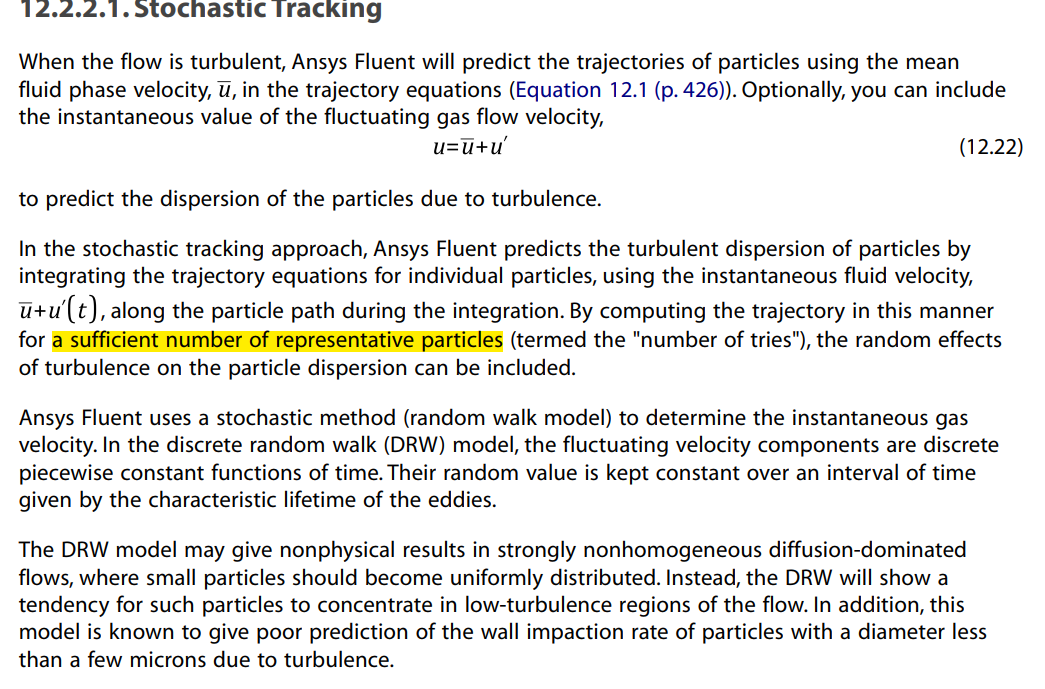-
-
September 23, 2024 at 2:36 am
ll00023
Subscriberthe particle velocity is mean velocity + fluctuation velocity;
fluctuation velocity is predicted by random walk model. so the randomness has been included. why is the number of tries used to include the random effect of turbulence?
could I just use the number of tries = 1 to predict the particle trajetory, since I need to find some patterns of particle movement in my system.
is there any better way to do this?
my case setting:
2D kw-sst model, with combustion.
coal particle;
particle surface injection,
Random walk model;
-
September 23, 2024 at 9:27 am
Rob
Forum ModeratorI think you've muddled up the cause and effect, possibly not helped by our tendency to misuse particle & parcel terms.
Think about the basics.
Turbulence is random and it's effect will change with time. Ie the eddies form, move and break up etc. To avoid modelling every eddy we can use a RANS approach. So we now have a single (hopefully) solution with modelled values for the turbulence field.
We now add particles. They follow the flow. Good, but the flow should vary due to turbulence: we're modelling that as a constant value because we're using RANS so there's no variation. If we use Stochastic tries, we add a random kick to particles based on the turbulence field. As it's random and we often want a meaningful particle distribution we need lots of tries so the kick is random to each track in each cell and that probably evens out with sufficient tries. One try is not statistically meaningful: 100 tries is probably excessive.
-
- You must be logged in to reply to this topic.


- air flow in and out of computer case
- Varying Bond model parameters to mimic soil particle cohesion/stiction
- Eroded Mass due to Erosion of Soil Particles by Fluids
- I am doing a corona simulation. But particles are not spreading.
- Issue to compile a UDF in ANSYS Fluent
- Guidance needed for Conjugate Heat Transfer Analysis for a 3s3p Li-ion Battery
- JACOBI Convergence Issue in ANSYS AQWA
- affinity not set
- Resuming SAG Mill Simulation with New Particle Batch in Rocky
- Continuing SAG Mill Simulation with New Particle Batch in Rocky

-
4492
-
1494
-
1376
-
1209
-
1021

© 2025 Copyright ANSYS, Inc. All rights reserved.









